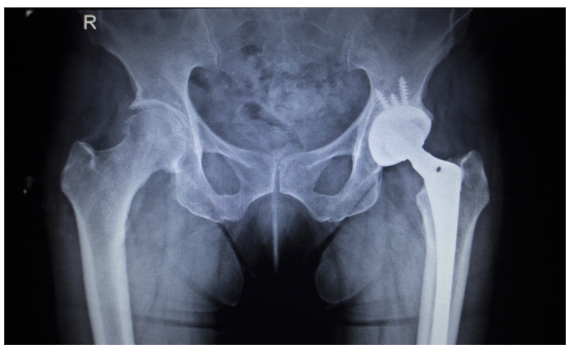Best Hip Replacement in Nagpur

Understanding Hip Anatomy, Causes of Hip Pain, and Surgical Solutions
Hip pain can greatly affect an individual’s ability to move and their overall quality of life, rendering even basic tasks such as walking or sitting painful. For those experiencing chronic hip pain, hip replacement surgery frequently emerges as a practical option. This blog will delve into the structure of the hip, prevalent causes of hip pain, the diagnostic procedures involved, and what one can anticipate from hip replacement surgery. If you are looking for top-notch hip replacement services in Nagpur, this guide will offer valuable information.
Anatomy of the Hip
The hip is one of the largest and most stable joints in the human body, designed to bear weight and allow a wide range of motion. It is a ball-and-socket joint, where the head of the femur (thigh bone) fits snugly into the acetabulum (a cup-like socket in the pelvis). Surrounding this joint are ligaments, tendons, muscles, and cartilage, all working together to ensure smooth movement and stability.
The cartilage acts as a cushion, preventing the bones from rubbing against each other, while the synovial membrane produces fluid to reduce friction and allow effortless joint movement. Damage or deterioration to any of these structures can result in pain, stiffness, and reduced mobility.
Common Causes of Hip Pain
Hip pain can stem from a range of factors, including injuries and degenerative conditions. Below are some of the most common causes:
- Osteoarthritis: This condition is the leading cause of hip pain, particularly among older adults. It occurs due to the gradual deterioration of cartilage, which leads to friction between bones and subsequent inflammation.
- Rheumatoid Arthritis: This autoimmune disorder involves the immune system erroneously attacking the lining of the joints, resulting in pain, swelling, and potential joint deterioration.
- Hip Fractures: Fractures typically arise from falls or accidents, particularly in older individuals whose bones may be weakened by osteoporosis.
- Bursitis: The inflammation of the bursae, which are small fluid-filled sacs that provide cushioning for the hip joint, can lead to sharp and localized pain.
- Tendonitis: Inflammation of the tendons surrounding the hip joint may occur due to overuse or repetitive stress.
Identifying the underlying cause of hip pain is essential for formulating an effective treatment strategy.
The Orthopedical Analysis
A comprehensive orthopedic evaluation by a specialist is essential for diagnosing hip pain. This evaluation generally encompasses the following components:
- Review of Medical History: Engaging in a discussion about symptoms, lifestyle factors, and any previous injuries.
- Physical Examination: Assessing the hip joint’s range of motion, strength, and stability.
- Imaging Studies: Utilizing X-rays, CT scans, and MRIs to obtain a detailed view of the joint’s condition.
- Blood Tests: Conducting tests in certain situations to exclude conditions such as rheumatoid arthritis or infections.
A precise diagnosis enables orthopedic specialists to suggest the most appropriate treatment options, whether they involve conservative management or surgical procedures.
Your Surgery: Hip Replacement Procedure
A comprehensive orthopedic evaluation by a specialist is essential for diagnosing hip pain. This evaluation generally encompasses the following components:
- Review of Medical History: Engaging in a discussion about symptoms, lifestyle factors, and any previous injuries
- Physical Examination: Assessing the hip joint’s range of motion, strength, and stability.
- Imaging Studies: Utilizing X-rays, CT scans, and MRIs to obtain a detailed view of the joint’s condition.
- Blood Tests: Conducting tests in certain situations to exclude conditions such as rheumatoid arthritis or infections. A precise diagnosis enables orthopedic specialists to suggest the most appropriate treatment options, whether they involve conservative management or surgical procedures.
Post-Surgery Care
The process of recovery following hip replacement surgery includes engaging in physical therapy, utilizing medications to alleviate pain, and attending follow-up appointments with the surgeon. A majority of patients report considerable pain relief and enhanced mobility after a successful surgical procedure.